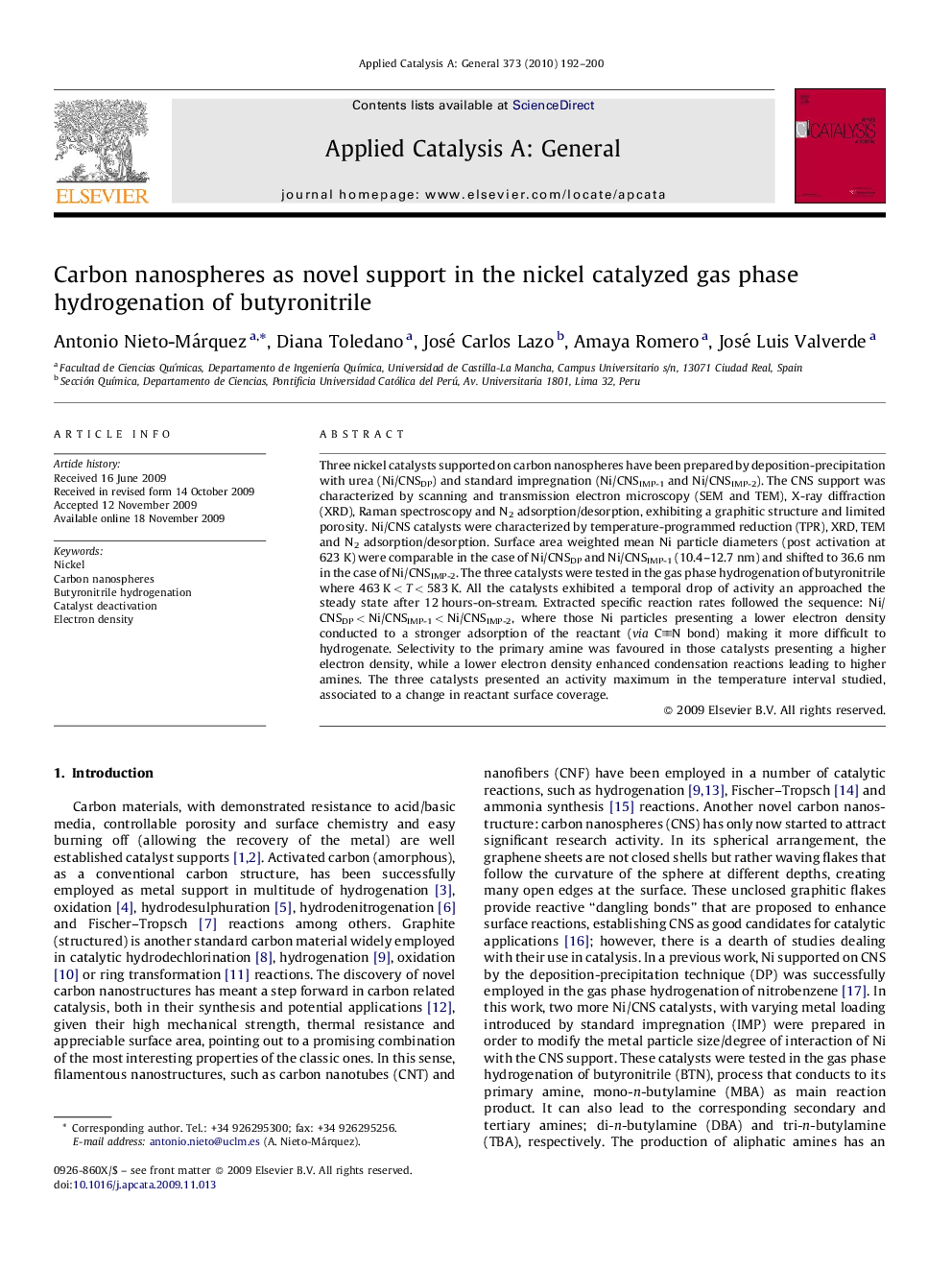| Article ID | Journal | Published Year | Pages | File Type |
|---|---|---|---|---|
| 42242 | Applied Catalysis A: General | 2010 | 9 Pages |
Three nickel catalysts supported on carbon nanospheres have been prepared by deposition-precipitation with urea (Ni/CNSDP) and standard impregnation (Ni/CNSIMP-1 and Ni/CNSIMP-2). The CNS support was characterized by scanning and transmission electron microscopy (SEM and TEM), X-ray diffraction (XRD), Raman spectroscopy and N2 adsorption/desorption, exhibiting a graphitic structure and limited porosity. Ni/CNS catalysts were characterized by temperature-programmed reduction (TPR), XRD, TEM and N2 adsorption/desorption. Surface area weighted mean Ni particle diameters (post activation at 623 K) were comparable in the case of Ni/CNSDP and Ni/CNSIMP-1 (10.4–12.7 nm) and shifted to 36.6 nm in the case of Ni/CNSIMP-2. The three catalysts were tested in the gas phase hydrogenation of butyronitrile where 463 K < T < 583 K. All the catalysts exhibited a temporal drop of activity an approached the steady state after 12 hours-on-stream. Extracted specific reaction rates followed the sequence: Ni/CNSDP < Ni/CNSIMP-1 < Ni/CNSIMP-2, where those Ni particles presenting a lower electron density conducted to a stronger adsorption of the reactant (via CN bond) making it more difficult to hydrogenate. Selectivity to the primary amine was favoured in those catalysts presenting a higher electron density, while a lower electron density enhanced condensation reactions leading to higher amines. The three catalysts presented an activity maximum in the temperature interval studied, associated to a change in reactant surface coverage.
Graphical abstractNickel supported on carbon nanospheres has been successfully employed in the gas phase hydrogenation of butyronitrile, where metal loading and introduction method had an important impact on catalyst activity and selectivity.Figure optionsDownload full-size imageDownload high-quality image (50 K)Download as PowerPoint slide
